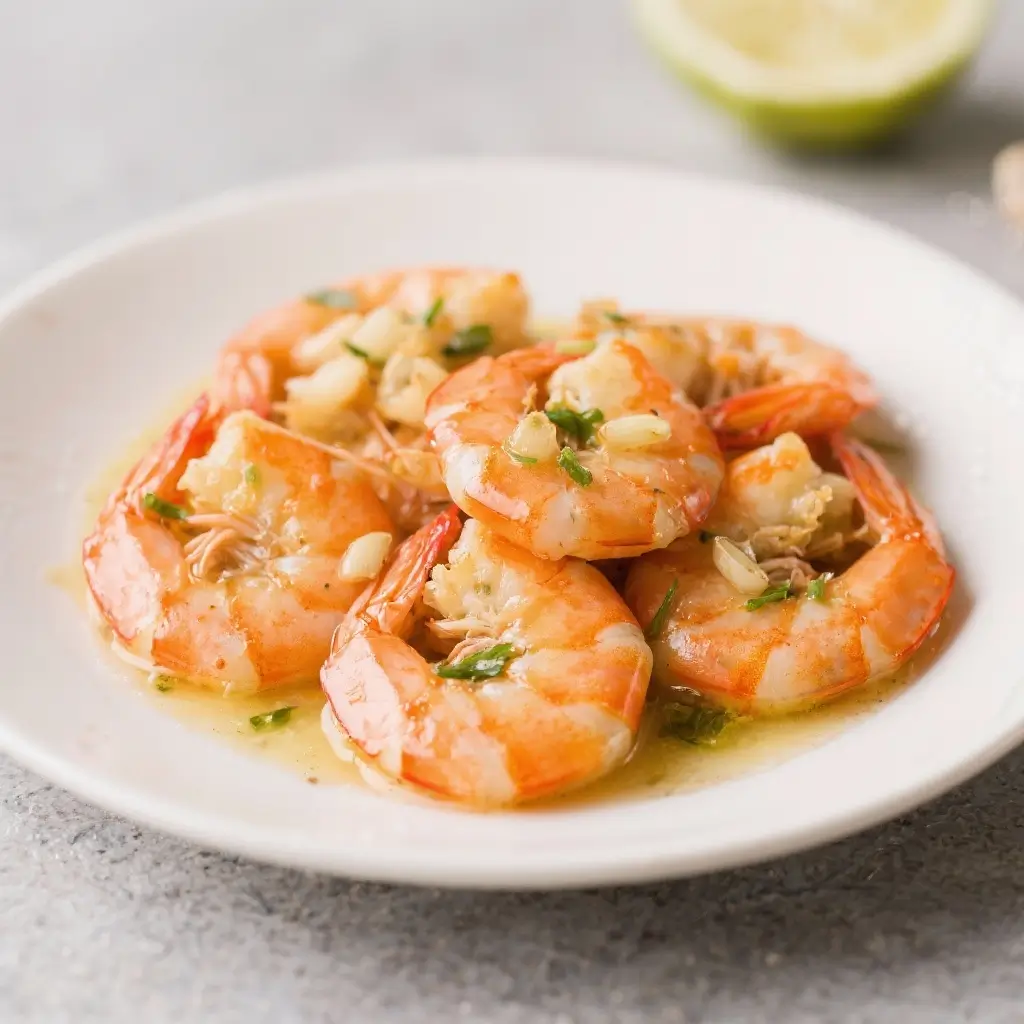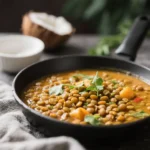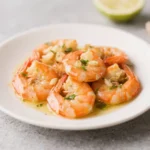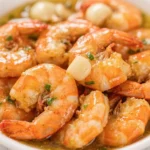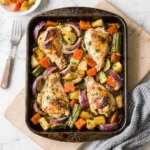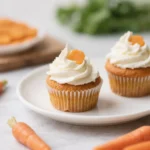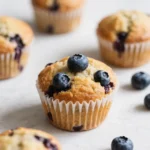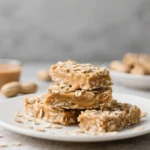Garlic Butter Shrimp: A Rich, Flavorful Delight for Seafood Lovers
There are few dishes that combine simplicity with elegance quite like Garlic Butter Shrimp. This dish has become a staple in both home kitchens and fine dining restaurants around the world, admired for its bold flavors, quick preparation time, and luxurious texture. Whether served over a bed of pasta, alongside crusty bread, or simply enjoyed on its own, Garlic Butter Shrimp offers a gourmet experience without requiring advanced culinary skills. In this comprehensive guide, we’ll dive deep into every aspect of this beloved recipe—from its historical roots to detailed ingredient breakdowns, cooking techniques, health benefits, variations, and frequently asked questions—so you can master it with confidence.
The History of Garlic Butter Shrimp
While it’s difficult to pinpoint the exact origin of Garlic Butter Shrimp, the dish is widely believed to have evolved from classic French and Mediterranean seafood preparations. Garlic and butter have long been fundamental ingredients in European cuisines, particularly in French cooking, where beurre à la Maître d’Hôtel (parsley butter) and garlic-infused sauces were used to enhance the flavor of fish and shellfish as early as the 18th century. Coastal regions of Italy and Spain also feature similar recipes using olive oil, garlic, and fresh herbs to prepare shrimp.
In the United States, Garlic Butter Shrimp gained popularity during the mid-20th century as part of the broader fascination with continental cuisine. With the rise of French-inspired American bistro culture and the growing availability of frozen shrimp, home cooks began adapting these rich, restaurant-style dishes for their own tables. Today, Garlic Butter Shrimp stands as a symbol of accessible indulgence—a dish that feels decadent yet can be prepared in under 15 minutes, making it ideal for weeknight dinners or elegant entertaining.
Ingredients Breakdown: What Makes Garlic Butter Shrimp So Irresistible?
The magic of Garlic Butter Shrimp lies in its deceptively simple ingredient list. Each component plays a crucial role in building layers of flavor, aroma, and texture. Here’s a detailed look at what goes into a classic version of the dish:
- Shrimp: Medium to large-sized shrimp (typically 21–25 per pound) are preferred for their meaty texture and ability to hold up to high-heat cooking. They should be peeled and deveined, with tails left on for presentation if desired. Fresh or properly thawed frozen shrimp work well.
- Butter: Unsalted butter is essential to control the salt level and allow the other flavors to shine. High-quality European-style butter with a higher fat content adds extra richness and a silkier mouthfeel.
- Garlic: Freshly minced garlic is non-negotiable. Its pungent, aromatic qualities are central to the dish. Too little, and the flavor falls flat; too much, and it can overpower. The key is slow sautéing to mellow its sharpness while enhancing its sweetness.
- Olive Oil: Often used in combination with butter to prevent burning (butter alone can scorch at high temperatures), olive oil adds a fruity depth and helps distribute heat evenly.
- Lemon Juice: Freshly squeezed lemon juice brightens the dish, cutting through the richness of the butter and balancing the overall flavor profile.
- Fresh Herbs: Parsley is most commonly used—flat-leaf (Italian) parsley offers the best flavor. Some variations include basil, thyme, or chives for added complexity.
- Salt and Black Pepper: Essential seasonings that enhance all other ingredients. Kosher salt is preferred for its clean taste and ease of control.
- Red Pepper Flakes (optional): For a hint of heat, a pinch of red pepper flakes can elevate the dish, adding a subtle kick that complements the garlic and lemon.
- White Wine (optional): Dry white wine such as Sauvignon Blanc or Pinot Grigio is sometimes used to deglaze the pan, adding acidity and depth while helping to create a luscious sauce.
Step-by-Step Recipe: How to Make Perfect Garlic Butter Shrimp Every Time
Follow this foolproof method to achieve tender, juicy shrimp bathed in a rich, aromatic garlic butter sauce.
- Prepare the Shrimp: Pat 1 pound of raw shrimp dry with paper towels. Moisture is the enemy of proper searing, so drying them thoroughly ensures a beautiful golden exterior rather than steaming.
- Season the Shrimp: Toss the shrimp with ½ teaspoon salt, ¼ teaspoon black pepper, and optionally, a pinch of paprika for color. Set aside.
- Heat the Pan: Place a large skillet (preferably stainless steel or cast iron) over medium-high heat. Add 1 tablespoon of olive oil and 1 tablespoon of unsalted butter. Allow them to melt and shimmer, but not brown.
- Sauté the Garlic: Reduce the heat to medium. Add 4–6 cloves of minced garlic and stir constantly for about 30–60 seconds until fragrant and just beginning to turn golden. Be careful not to burn it.
- Cook the Shrimp: Increase the heat back to medium-high. Add the shrimp in a single layer. Cook for 1–2 minutes per side, depending on size, until they turn pink and opaque. Avoid overcrowding the pan; cook in batches if necessary.
- Add Liquids: Pour in 2 tablespoons of freshly squeezed lemon juice and, if using, ¼ cup of dry white wine. Let the liquid bubble and reduce slightly for about 1–2 minutes, allowing the sauce to concentrate and cling to the shrimp.
- Finish with Butter and Herbs: Remove the skillet from heat. Stir in 2 additional tablespoons of cold butter (this is called monter au beurre in French cuisine) to create a glossy, emulsified sauce. Add ¼ cup chopped fresh parsley and toss everything together.
- Taste and Adjust: Give the dish a final taste. Adjust seasoning with more salt, pepper, or lemon juice as needed.
- Serve Immediately: Garlic Butter Shrimp is best served hot, right after cooking, to preserve texture and flavor.
Tips for Success: Elevate Your Garlic Butter Shrimp Game
- Use Cold Butter at the End: Adding cold butter off the heat creates a silky, restaurant-quality sauce through emulsification. Whisk vigorously to incorporate it smoothly.
- Don’t Overcook the Shrimp: Shrimp cook quickly and become rubbery when overdone. Remove them from the pan as soon as they curl into a “C” shape. A tight “O” shape means they’re overcooked.
- Infuse the Butter: For deeper flavor, consider making garlic-infused butter ahead of time by gently simmering minced garlic in melted butter, then straining and chilling. Use this in place of regular butter.
- Reserve Pasta Water: If serving over pasta, save some starchy pasta water to thin the sauce and help it adhere better to the noodles.
- Brown the Shells (Optional): If using shrimp with shells on, sear the shells first to extract flavor, then remove and discard before adding the meat. This adds umami depth to the sauce.
- Rest Before Serving: Let the dish sit for 1–2 minutes after finishing to allow flavors to meld, especially if wine or strong acids are used.
Variations and Customizations: Make It Your Own
Garlic Butter Shrimp is incredibly versatile and adapts beautifully to different tastes and dietary preferences. Here are some creative twists to explore:
- Spicy Garlic Butter Shrimp: Add ½ teaspoon of crushed red pepper flakes or a diced fresh jalapeño when sautéing the garlic for a fiery kick.
- Creamy Version: Stir in ¼ to ½ cup of heavy cream or crème fraîche at the end for a richer, velvety sauce reminiscent of Alfredo.
- With Tomatoes: Add 1 cup of halved cherry tomatoes during the last minute of cooking. Their sweetness balances the garlic and acid beautifully.
- Mediterranean Style: Incorporate sun-dried tomatoes, kalamata olives, capers, and oregano for a Greek-inspired twist.
- Asian Fusion: Replace butter with coconut oil, use ginger instead of some garlic, add soy sauce, sesame oil, and green onions for an umami-rich variation.
- Herb-Forward: Mix in fresh basil, dill, or tarragon along with parsley for a more complex herbal note.
- Low-Carb/Keto Option: Serve over zucchini noodles, cauliflower rice, or roasted vegetables to keep it low-carb friendly.
- With Cheese: Sprinkle with grated Parmesan or feta just before serving for a salty, savory boost.
- Grilled Version: Marinate shrimp in garlic butter and lemon, then grill on skewers for a smoky flavor.
Health Considerations and Nutritional Value
Garlic Butter Shrimp can be part of a balanced diet when prepared thoughtfully. Here’s a nutritional breakdown for a typical serving (about 4 oz shrimp with sauce):
- Calories: ~250–300 kcal
- Protein: ~20–25g – Shrimp is an excellent source of lean protein, supporting muscle repair and satiety.
- Fat: ~15–20g – Primarily from butter and olive oil. While high in saturated fat, moderate consumption of quality fats supports heart and brain health.
- Carbohydrates: ~3–5g – Mostly from minimal natural sugars and optional wine.
- Cholesterol: ~180mg – Shrimp are naturally high in cholesterol, but current research suggests dietary cholesterol has less impact on blood cholesterol than once believed.
- Sodium: ~400–600mg – Can be controlled by reducing added salt and using low-sodium ingredients.
Health Benefits:
- Rich in Selenium and Vitamin B12: Supports immune function and energy metabolism.
- Omega-3 Fatty Acids: Though not as high as fatty fish, shrimp contain some anti-inflammatory omega-3s.
- Antioxidant Properties: Garlic contains allicin, which has been linked to reduced blood pressure and improved cholesterol levels.
- Low in Mercury: Shrimp are among the safest seafood choices in terms of mercury contamination.
Dietary Modifications:
- Dairy-Free: Substitute butter with vegan butter or extra olive oil.
- Lactose Intolerant: Use clarified butter (ghee), which removes milk solids.
- Lower Fat: Reduce butter quantity and increase broth or lemon juice for volume.
- Allergy-Friendly: Ensure shrimp are sustainably sourced and processed in allergen-free facilities if cross-contamination is a concern.
Ingredients
- 1 pound (450g) large raw shrimp, peeled and deveined (tails on or off)
- 4 tablespoons unsalted butter, divided
- 1 tablespoon extra virgin olive oil
- 5–6 cloves garlic, finely minced
- 2 tablespoons fresh lemon juice (about 1 lemon)
- ¼ cup dry white wine (optional)
- ¼ cup fresh parsley, finely chopped
- ½ teaspoon kosher salt (or to taste)
- ¼ teaspoon freshly ground black pepper
- ¼ teaspoon red pepper flakes (optional)
Directions
- Pat the shrimp dry with paper towels and season lightly with salt, pepper, and red pepper flakes (if using). Set aside.
- In a large skillet over medium-high heat, add olive oil and 1 tablespoon of butter. Heat until the butter melts and starts to foam slightly.
- Reduce heat to medium. Add minced garlic and sauté for 30–60 seconds, stirring constantly, until fragrant and golden—do not let it burn.
- Increase heat to medium-high. Add shrimp in a single layer and cook for 1–2 minutes per side, until pink and opaque. Remove shrimp and set aside temporarily if continuing with wine reduction.
- If using wine, pour it into the hot pan and scrape up any browned bits (fond). Simmer for 1–2 minutes until slightly reduced.
- Return shrimp to the pan. Add lemon juice and stir to combine.
- Remove from heat. Stir in remaining 3 tablespoons of cold butter, one piece at a time, until fully incorporated and sauce becomes glossy.
- Add chopped parsley and toss to coat.
- Taste and adjust seasoning with additional salt, pepper, or lemon juice as needed.
- Serve immediately over pasta, rice, mashed potatoes, or with crusty bread for dipping.
FAQ
Can I use frozen shrimp?
Yes, but make sure to thaw them properly in the refrigerator overnight or under cold running water. Never cook frozen shrimp directly, as they will release too much water and steam instead of searing.
Can I make this ahead of time?
Best served fresh, but you can prep ingredients (mince garlic, chop herbs, measure liquids) in advance. Reheating may overcook the shrimp, so consider warming gently in a pan with a splash of broth.
Why did my sauce break or separate?
This usually happens if the butter is too hot or added too quickly. Always remove from heat and whisk in cold butter gradually for a stable emulsion.
What kind of shrimp should I buy?
Look for wild-caught Gulf or Atlantic shrimp if possible. Avoid “chlorinated” or imported shrimp with unknown sourcing. Frozen shrimp often taste fresher than “fresh” displayed shrimp, which may have been previously frozen.
Is Garlic Butter Shrimp healthy?
In moderation, yes. It’s high in protein and low in carbs, though the butter increases fat and calorie content. Balance it with vegetables or whole grains.
Can I use margarine instead of butter?
Not recommended. Margarine contains water and additives that don’t emulsify well and can give an artificial taste. Stick to real butter for best results.
How do I store leftovers?
Store in an airtight container in the refrigerator for up to 2 days. Reheat gently in a skillet over low heat with a splash of water or broth to revive the sauce.
Can I double the recipe?
Yes, but cook in batches to avoid overcrowding the pan, which leads to steaming instead of searing.
Summary
Garlic Butter Shrimp is a quick, flavorful, and elegant dish that brings restaurant-quality taste to your kitchen with minimal effort. Packed with aromatic garlic, rich butter, and succulent shrimp, it’s endlessly customizable and perfect for any occasion.
